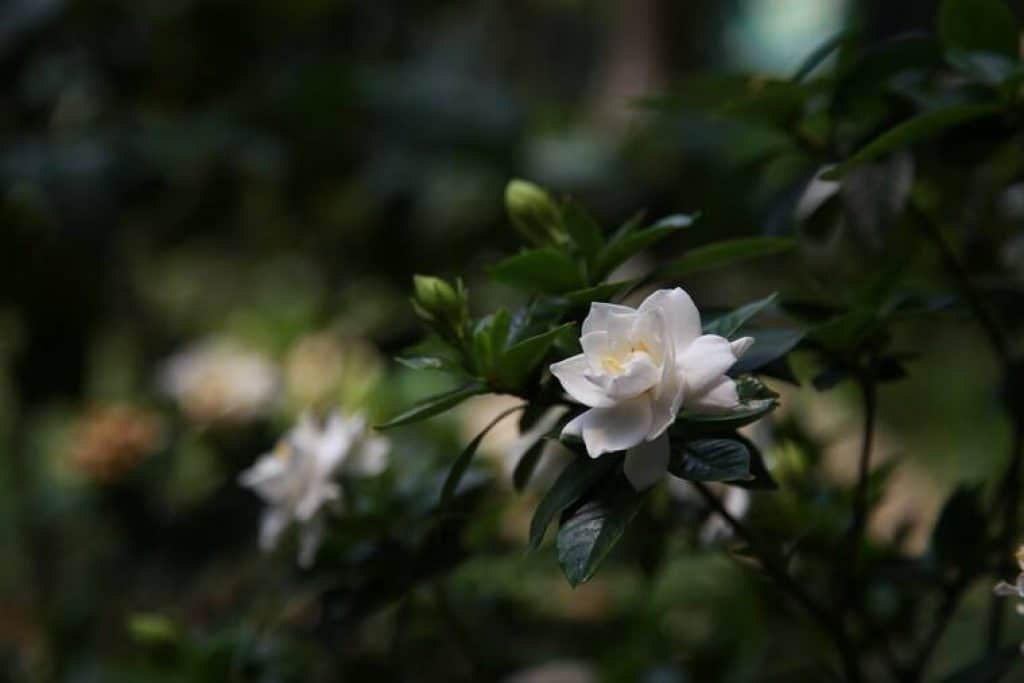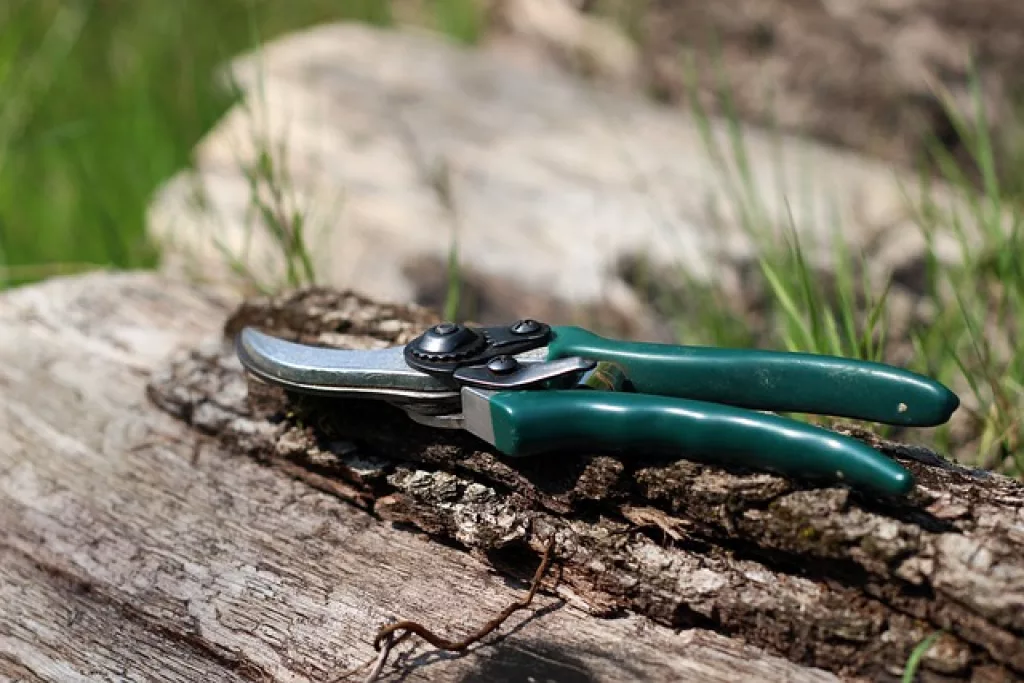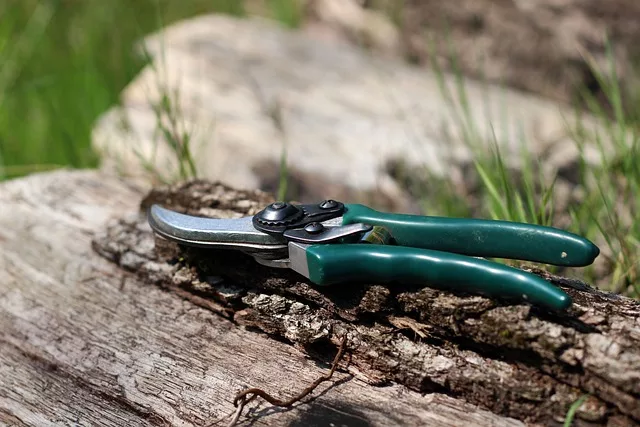So the question is: When to prune gardenias? Generally, an excellent time to prune gardenias is just at the beginning of spring, before the plant recovers its activity, and as long as there is no risk of frost. This will allow less sap loss, and as the development stage is close, the wounds will begin to heal soon. Pruning in the fall may be a good option in places with warm winters. Seasonal pruning is done annually.
Now that you know when to prune the gardenia, we invite you to continue reading to learn the best practices for caring for your Gardenia.

Why prune gardenias?
The purpose of gardenia pruning is to redirect its energy and release the plant from damaged or withered stems, leaves, and flowers. This benefits the plant since it helps prevent diseases and improves its development and appearance, which is why it is one of the most critical tasks.
Although it is simple to prune a gardenia, it is the key to its growth each spring. Apart from the fact that with this, you get the desired shape, you also encourage the flowering of the gardenias.
The objectives of gardenia pruning are:
- Encourage plant growth.
- Favor lighting and aeration in the stem of the plant.
- Removal of damaged, broken, or dried branches, leaves, or flowers, which can also harbor parasites.
- Improve the flowering of the plant.
- Enhance color.
If the pruning is carried out correctly, the development and appearance of the plant will improve. Thus, the size of the plant and flowering will increase.
Many types of pruning, such as maintenance pruning, can be done at any time of the year. It is a cleaning process that eliminates all the suckers, that is, those twigs that come out between the main stem and the branches, as well as yellowed or dry leaves, damaged stems, or withered flowers.
There are many ways to prune a gardenia, and obtaining an optimal result will depend on the technique of the pruner. However, there are some criteria that we must take into account when pruning gardenias. I will explain everything you need to know about pruning gardenias for an optimal result. Pay attention to these tips:
How to prune gardenias?
Before pruning, you must disinfect all the utensils, preparing a mixture of alcohol and water in equal parts or one of bleach and water (1:9).
In general, good pruning starts by removing any decayed branches or leaves (dead or damaged), then we will attack the tangled stems or those that grow without any direction. You can start with the pruning, working on the internal area when you have finished. As we have already handled the center of the gardenia, we will start with the sides –which are the ones that give the plant its shape.
During the flowering season, the gardenias’ dead flowers must also be eliminated. These will be brown or yellow and give a sick appearance. We will remove them by pinching the base of the bulging seed behind the flower’s base with the index finger and thumb and remove the dead stem from the branch. This step may need to be done once or twice a week when it is blooming.
ProTip: As we have mentioned, these plants do not perform very well in the cold, so it is advisable to transplant them into a pot when you live in an area with cold winters. When you do so, please take advantage of it and remove the dead roots.

Types of Gardenia Pruning
Cleaning or maintenance pruning
Maintenance pruning is usually essential in any plant, but the only variation will be the frequency, which varies depending on the species. We must eliminate all those elements we do not want: dry, dead, or diseased branches; stumps, which are those portions of dry branches without buds. In the same way, we will discard sprouts at the foot of the bush that seems weak or poorly positioned and could affect us if they grow as a branch of the bush; also, eliminate branches that are crossed or in the wrong place.
Apart from reducing the risk of any disease by eliminating elements that no longer contribute anything to our gardenias, we can also take advantage of this pruning to give it the shape we are looking for; we achieve this by removing withered flowers and fruits that are very ripe because they do not look pretty –aesthetically speaking– and consume energy from the plant. In some cases, it may be necessary to correct the asymmetry to have a harmonious composition in sight: pruning the crown, for example.
How to manage the suckers?
We will eliminate the suckers in the following way: we will locate the secondary suckers between the first leaves and the main stem. Later we will cut the suckers carefully, cutting as close as possible to the main stem without damaging it. It is best to do it when the sprout is less than 5 centimeters. Cut the sprouts diagonally so that the water can flow. This will prevent water from staying in the wound and causing it to rot.
Then we will eliminate the following undesirable elements:
- Dead, dry, or diseased stems, leaves, and flowers.
- Sprouts that may have arisen from the same root (they are called serpents).
- Sprouts from the foot of the plant are weak or poorly located, and we are not interested in their development.
- Branches crossed, misdirected, or that entangle the bush.
- Withered flowers make the plant ugly and consume energy.
Flowering pruning
The gardenia tends to bloom at the end of spring, and although it bears flowers the rest of the year, these are in less quantity, which is why we must do this pruning when the main flowering is over because if you do it before, you can cause it to decrease, and even, make it stop. We should dedicate ourselves to strong pruning in mid-spring if the occasion presents itself where the gardenia has been abandoned.
Ideally, we apply the pinching technique, pinching the tips of the tender shoots of the plant with a small scissor or with the thumb and forefinger –preferably using your clean fingers–. This will cause more significant ramifications in the plant, achieving a more rounded and bushy, because the more branches we have, the more flowers we get.
Once flowering is complete, begin by pinching the new shoots, cutting them precisely above the second node, and counting from insertion. Stop pinching around midsummer to see fall flowers. If you do it this way, the next clamping will be next year.
Gardeners usually prune flowering plants in late winter or early spring to increase the flowering.
In general, we will proceed as follows:
Prune in winter, when the most intense cold has passed, around mid-February. The buds that have flowered will never do so again; therefore, they must be removed for new ones to emerge. Flowering pruning can be done at the same time as the cleaning. Do not cut the stems that have not flowered since they are the ones that will flower next year.

Gardenia rejuvenation pruning
First, we will have to reduce the volume with cleaning pruning and force the appearance of tender shoots to have a more bushy gardenia. When we make these cuts, we must do it above the buds, using hand scissors, to reduce the volume by half. And although it does not look very striking, it is a necessary step if we want to give life to our gardenia. We recommend that you transplant your gardenia in a container so that you can renew the soil and help it recover more quickly.
Renewal or rejuvenation pruning is a technique that eliminates the dry, damaged, and useless parts of the plant to clean it and allow new shoots to grow. We recommend doing it before the flowering season begins. We can prune this type of plant in two ways, drastic or progressive.
Drastic or Progressive?
Drastic rejuvenation pruning: we will cut the entire plant flush with the ground. This should only be done if the specimen has the strength to support it and ensure watering and fertilizer afterward.
Progressive rejuvenation pruning consists of eliminating 50% of the branches and cutting them flush with their insertion. The preserved branches are cut to half their length or only a third of the tip on the best bud we can find on it.
When and how often are gardenias pruned?
Knowing when to prune the bush will prevent you from damaging the developing flowers. Therefore, you should do it only after each flowering, before the temperature during the day is higher than 18°C. The most accurate indication is when the flowers begin to wither; when we observe this, we will count 1 or 2 weeks to cut.
Wrap Up – When to prune gardenias?
Remember, depending on your plant’s needs at the beginning of spring, you can prune gardenias in many ways. We hope you found this article helpful.

